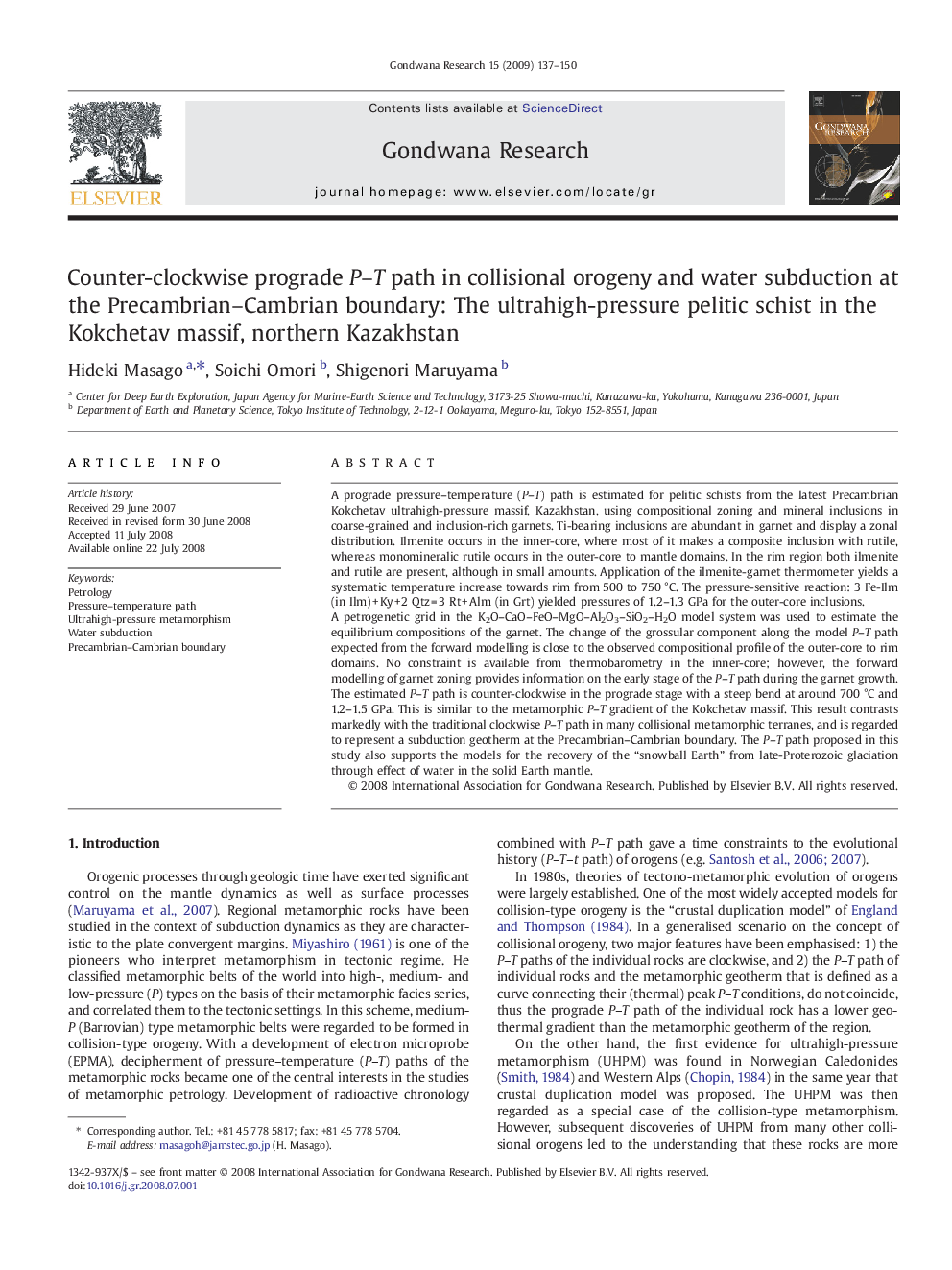| کد مقاله | کد نشریه | سال انتشار | مقاله انگلیسی | نسخه تمام متن |
|---|---|---|---|---|
| 4727576 | 1356384 | 2009 | 14 صفحه PDF | دانلود رایگان |

A prograde pressure–temperature (P–T) path is estimated for pelitic schists from the latest Precambrian Kokchetav ultrahigh-pressure massif, Kazakhstan, using compositional zoning and mineral inclusions in coarse-grained and inclusion-rich garnets. Ti-bearing inclusions are abundant in garnet and display a zonal distribution. Ilmenite occurs in the inner-core, where most of it makes a composite inclusion with rutile, whereas monomineralic rutile occurs in the outer-core to mantle domains. In the rim region both ilmenite and rutile are present, although in small amounts. Application of the ilmenite-garnet thermometer yields a systematic temperature increase towards rim from 500 to 750 °C. The pressure-sensitive reaction: 3 Fe-Ilm (in Ilm) + Ky + 2 Qtz = 3 Rt + Alm (in Grt) yielded pressures of 1.2–1.3 GPa for the outer-core inclusions.A petrogenetic grid in the K2O–CaO–FeO–MgO–Al2O3–SiO2–H2O model system was used to estimate the equilibrium compositions of the garnet. The change of the grossular component along the model P–T path expected from the forward modelling is close to the observed compositional profile of the outer-core to rim domains. No constraint is available from thermobarometry in the inner-core; however, the forward modelling of garnet zoning provides information on the early stage of the P–T path during the garnet growth.The estimated P–T path is counter-clockwise in the prograde stage with a steep bend at around 700 °C and 1.2–1.5 GPa. This is similar to the metamorphic P–T gradient of the Kokchetav massif. This result contrasts markedly with the traditional clockwise P–T path in many collisional metamorphic terranes, and is regarded to represent a subduction geotherm at the Precambrian–Cambrian boundary. The P–T path proposed in this study also supports the models for the recovery of the “snowball Earth” from late-Proterozoic glaciation through effect of water in the solid Earth mantle.
Journal: Gondwana Research - Volume 15, Issue 2, April 2009, Pages 137–150